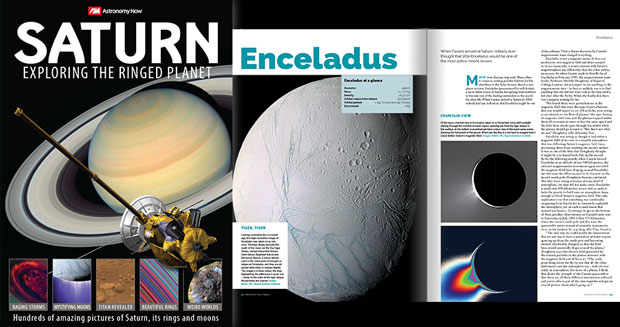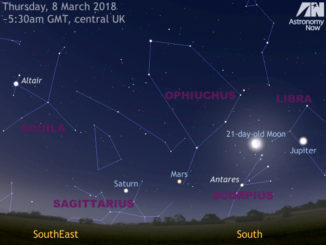Pan and moons like it have profound effects on Saturn’s rings. The effects can range from clearing gaps, to creating new ringlets, to raising vertical waves that rise above and below the ring plane. All of these effects, produced by gravity, are seen in this image from the Cassini probe.
Pan (28 kilometres or 17 miles across), seen in image centre, maintains the Encke Gap in which it orbits, but it also helps create and shape the narrow ringlets that appear in the Encke gap. Two faint ringlets are visible in this image, below and to the right of Pan.
Many moons, Pan included, create waves at distant points in Saturn’s rings where ring particles and the moons have orbital resonances. Many such waves are visible here as narrow groupings of brighter and darker bands. Studying these waves can provide information on local ring conditions.
The view looks toward the unilluminated side of the rings from about 22 degrees below the ring plane. The image was taken in visible light with the Cassini spacecraft narrow-angle camera on 3 April 3 2016.
The view was obtained at a distance of approximately 373,000 kilometres (232,000 miles) from Saturn and at a Sun-Saturn-spacecraft, or phase, angle of 140 degrees. Image scale is 2 kilometres (1.2 miles) per pixel.
Saturn: Exploring the Ringed Planet
Find out more about Saturn and its moons in this 196-page special edition from Astronomy Now. Order from our online store.





